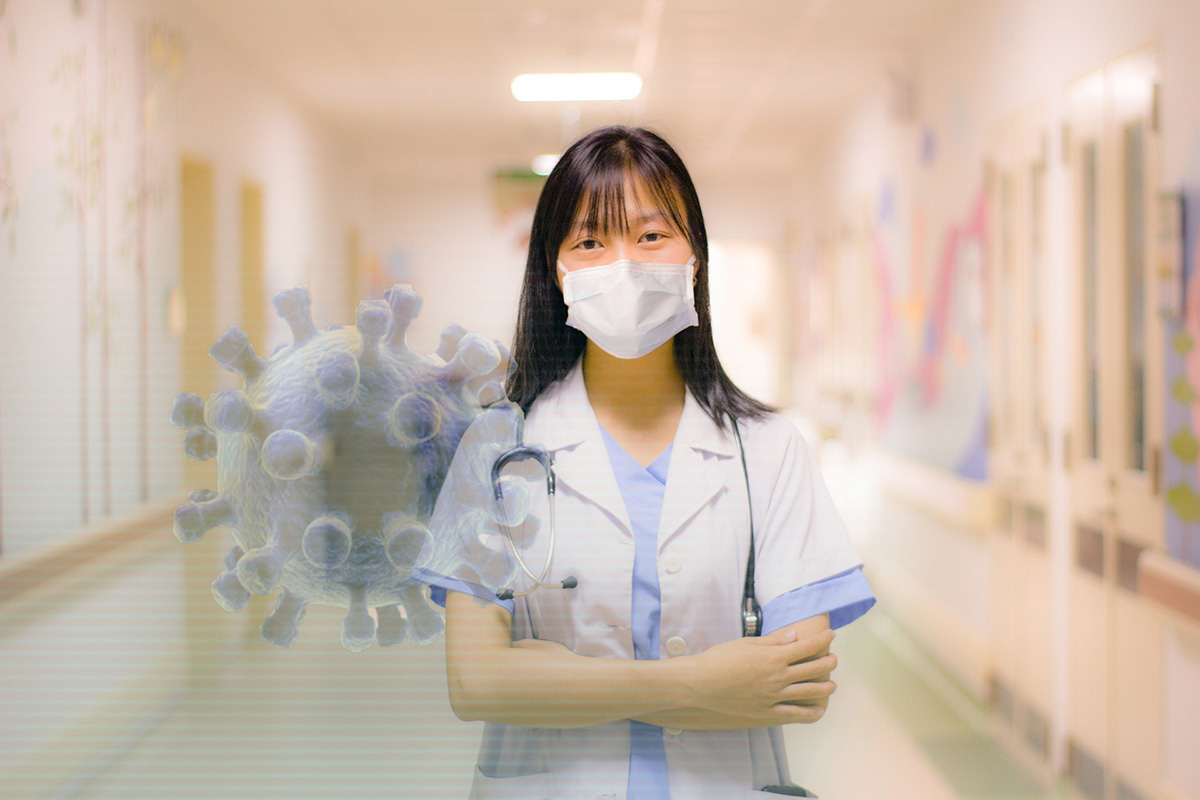Inactivation of viruses and bacteria
In order to inactivate viruses and bacteria we need to know what is the lethal dose which will achieve that goal. The effective resistance of many types of microorganisms to UV-C varies considerably. We should know that the germicidal
effect starts directly after the irradiation commences and is linear to the UV-C dose. After this a plateau is reached. The dose related to the irradiance as shown in the formula:
– H = E • t
– H: Dose in mJ/cm²
– E: Irradiance in mW/cm²
– t: Irradiation time
We also need to know that pathogen, SARS-CoV-2, is an enveloped single-stranded RNA virus and member of the family coronaviridae of the order nidovirales. All viruses of this family exhibit very similar features, so we should be able
to approach their inactivation in the same manner.
But, when the tests were performed, the calculated and estimated results, given as log- reduction doses, exhibit extreme variability, even within the 254 nm results, ranging from 0.6 mJ/cm2 (bovine coronavirus) to 11,754 mJ/cm2 (SARS
(CoV Urbani). Even the differences between the SARS-CoV strains were above two orders of magnitude concerning the necessary dose.
Possible reasons for this observation might be biological and biochemical differences between the coronavirus strains.
Research shows UV-C radiation has been effective against all coronaviruses in all published investigations, although the absorption properties of the sample media reduced inactivation success. The calculated upper limit for the log-reduction
median dose (in low-absorbance media) is 10.6 mJ/cm2, but the probably more precise estimation is 3.7 mJ/cm2.
It is also proven that the necessary irradiation doses are lower for viruses on surfaces, aerosols and pure salt solutions.
When we come to SARS-CoV-2 virus, Far-UV-C light (222nm) also shows to be the most efficient and safe in the inactivation of said virus…
Paper currency and coins may be a public health risk when associated with the simultaneous handling of food and could lead to the spread of nosocomial infections…
Decontaminating work apparel is probably the best way to reduce sick-related leave costs in times of epidemics or pandemics…
The influenza virus can “live” on some surfaces for up to 48 hours. Routine cleaning of surfaces may reduce the spread of flu…
The effective resistance of many types of microorganisms to UV-C varies considerably. We should know that the germicidal effect starts directly after the irradiation…
All kinds of germs are found in public transport vehicles, so it is important to take care of that part of public health security by disinfecting those vehicles the proper way…







